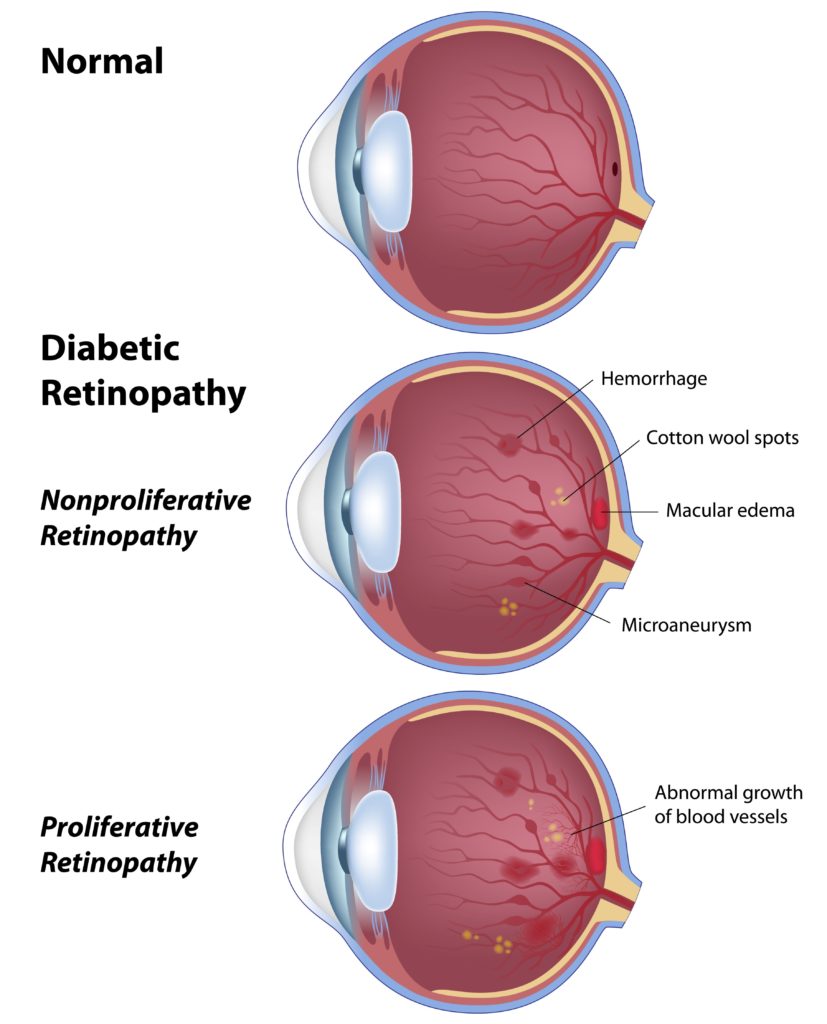
Diabetic retinopathy, the most common diabetic eye disease, occurs when there are changes in the blood vessels in the retina.
Diabetic retinopathy, is retinopathy (damage to the retina) caused by complications of diabetes, which can eventually lead to blindness.
It is an ocular manifestation of diabetes, a systemic disease, which affects up to 80 percent of all patients who have had diabetes for 10 years or more. Despite these intimidating statistics, research indicates that at least 90% of these new cases could be reduced if there was proper and vigilant treatment and monitoring of the eyes. The longer a person has diabetes, the higher his or her chances of developing diabetic retinopathy.
Diabetic retinopathy often has no early warning signs. Even macular edema, which may cause vision loss more rapidly, may not have any warning signs for some time. In general, however, a person with macular edema is likely to have blurred vision, making it hard to do things like read or drive. In some cases, the vision will get better or worse during the day.
The best treatment for diabetic retinopathy is prevention. Strict control of blood sugar will significantly reduce the long-term risk of loss of vision. Treatment usually does not cure diabetic retinopathy nor does it usually restore normal vision but may slow the progression of vision loss. Without treatment, diabetic retinopathy progresses continuously, from a minimum to severe stages.